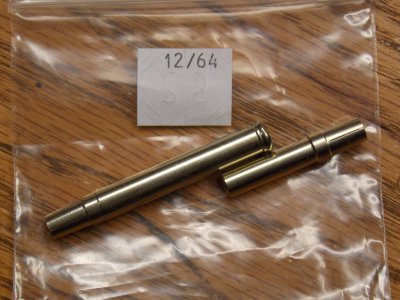I didn't manage to comment on one of Bill's earlier comments in time to have my comment follow his so this isn't even on the same page (and this forum doesn't allow for insertion of comments out of chronological order even for Moderators). But on the subject of the jaws that may be found on 3-jaw chucks, there were actually three types, one quite uncommon. The most common type have the truncated threads on the back curved, the jaws will only mesh with the scroll one way, and two sets of three jaws are always furnished with the chuck when new, Unfortunately, the second set of jaws is, more often than not, lost by the time that the chuck gets re-sold as used.
The second type, usually found on more expensive chucks, have three master jaws matched to the scroll and removable reversible outer jaws machined to tighter tolerances. In most cases you can buy replacement outer jaws if the originals get worn or damaged. And you can buy what are usually called "soft jaws" for the chuck and machine them for special purposes.
The third type that Bill referred to are quite rare but the truncated threads on the rear of each jaw are lozenge shaped instead of curved and will fit into the scroll in either direction. However, these are more expensive to make than the standard solid jaws and because one side of the truncated threads are only in line instead of area contact with the scroll, neither the jaws nor the scroll last very long compared to standard jaws. I wouldn't personally buy one of them other than as a curio. I'm not certain that anyone still makes this type of chuck.
On a different subject, the term "drill chuck" is more commonly taken to mean the type of keyed or key-less 3-jaw chucks as are typically found on electric drills (sometimes called "drill motors") and drill presses. I wasn't aware that the term once had a different meaning.


